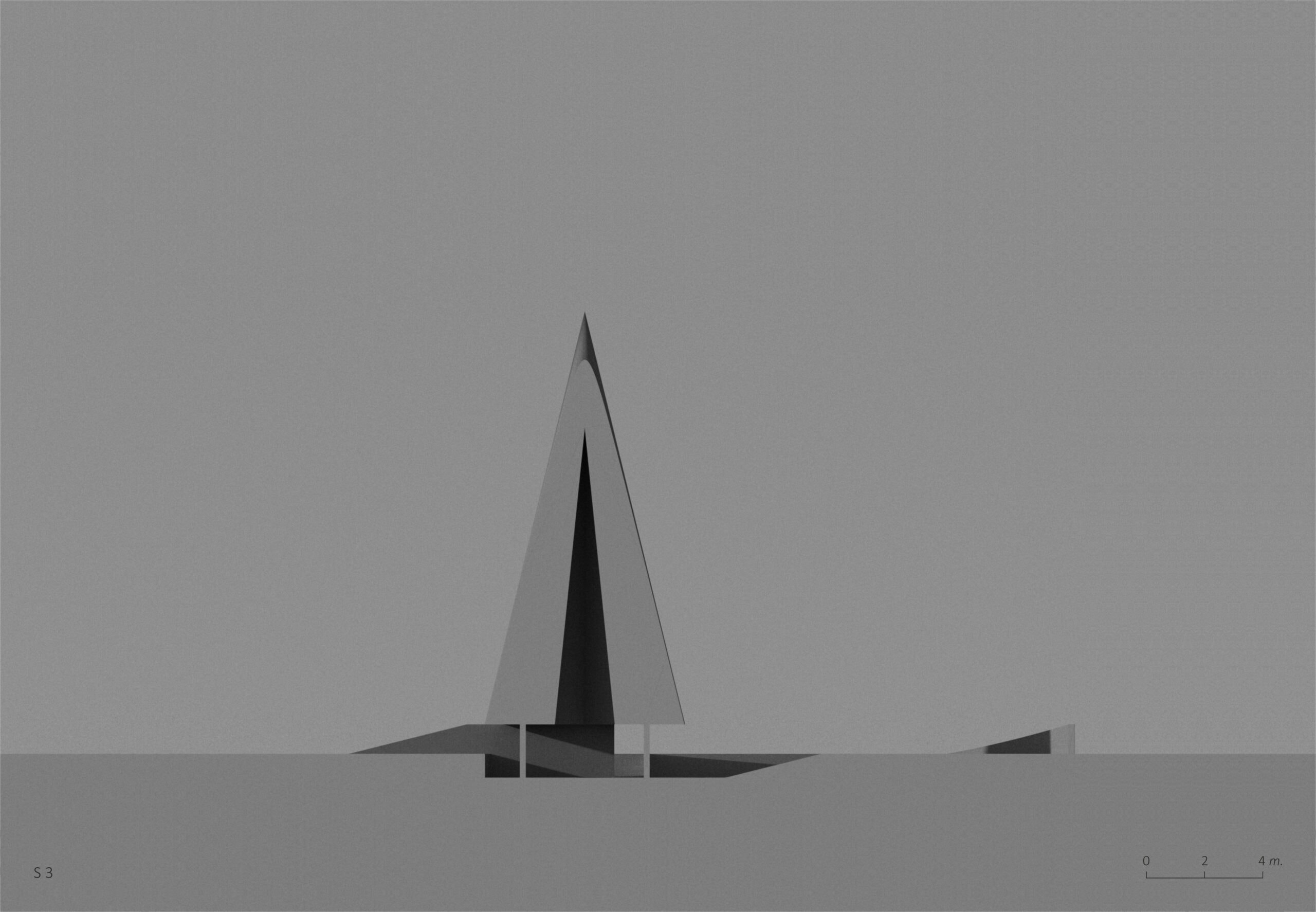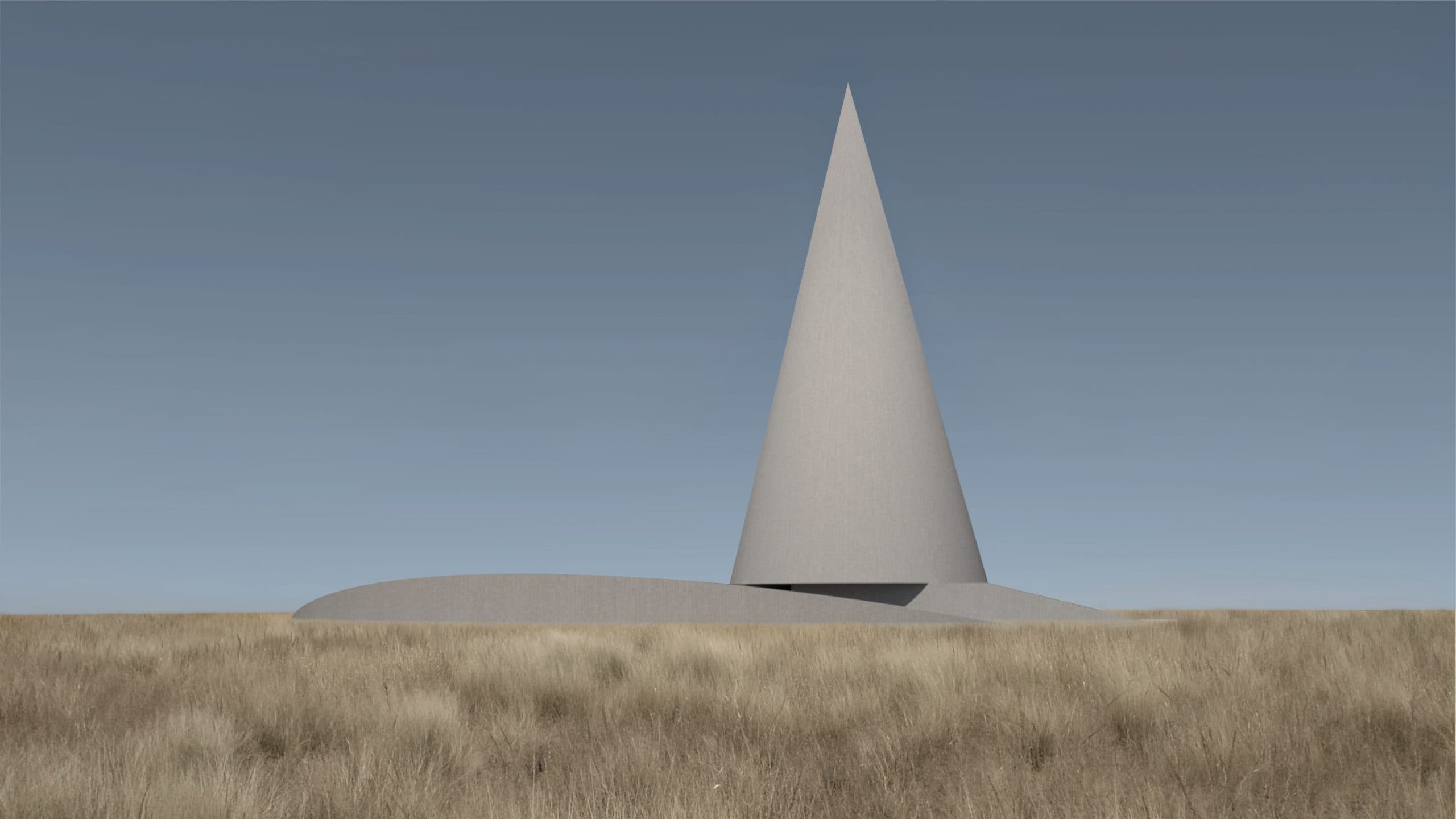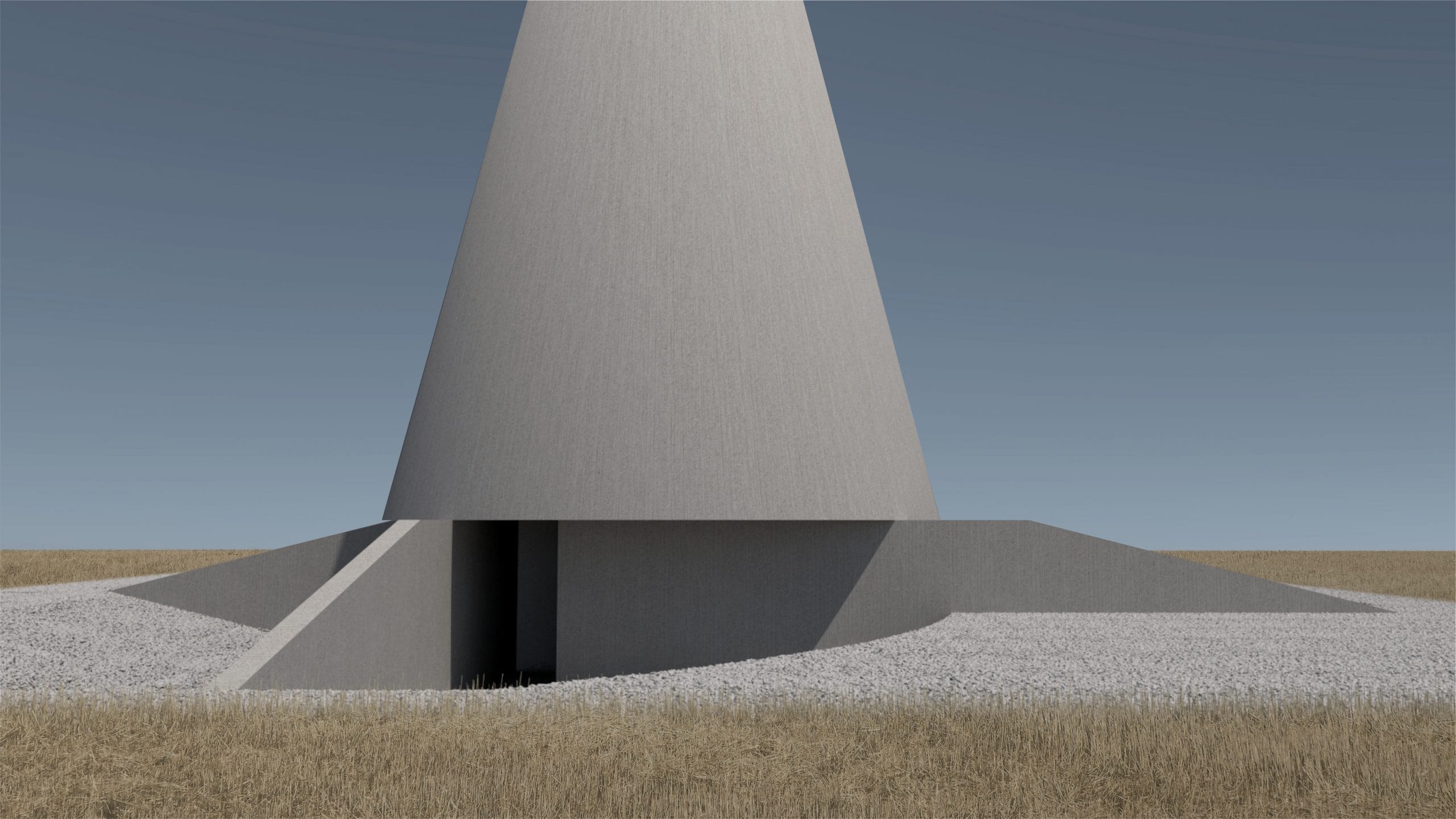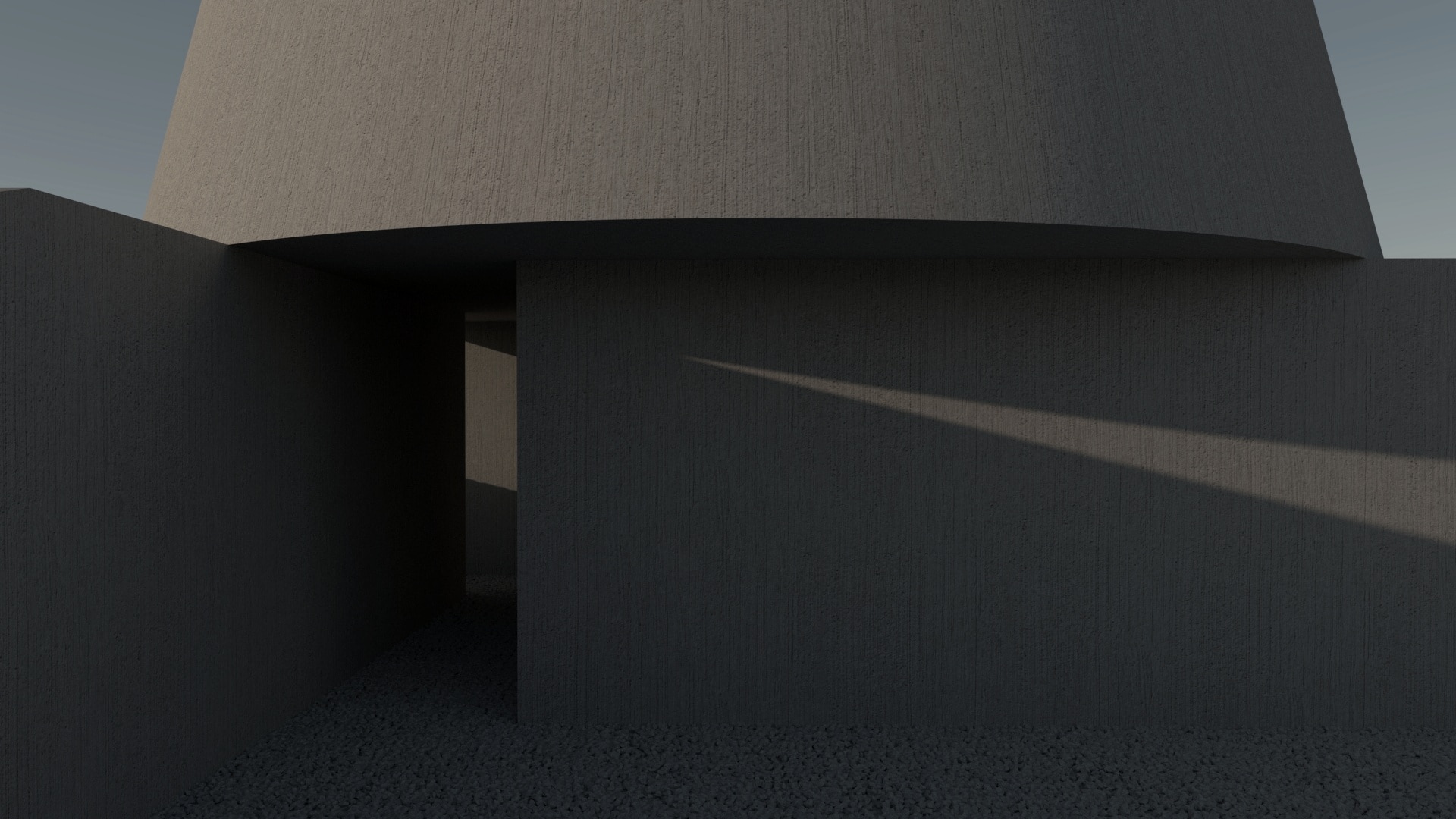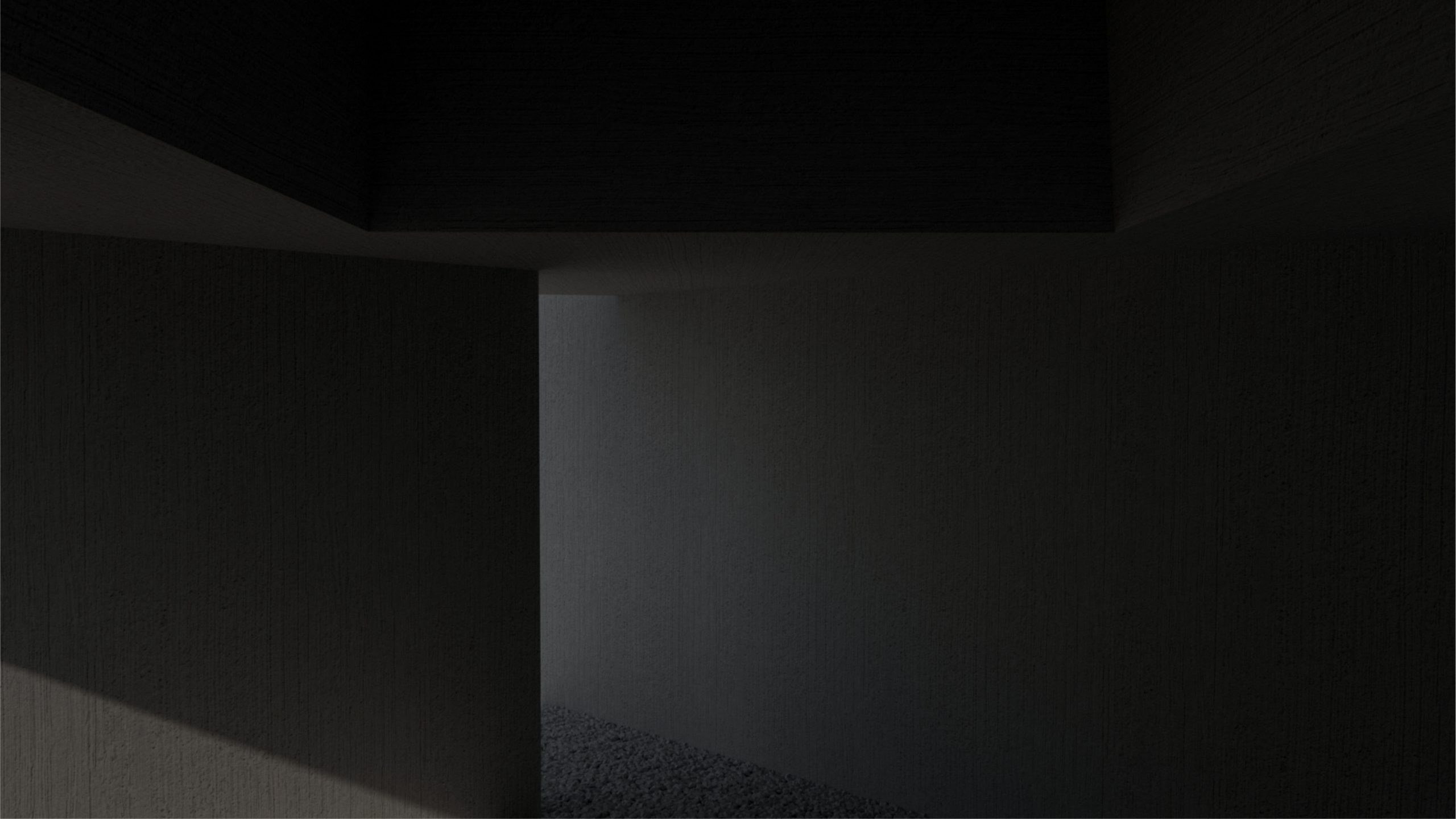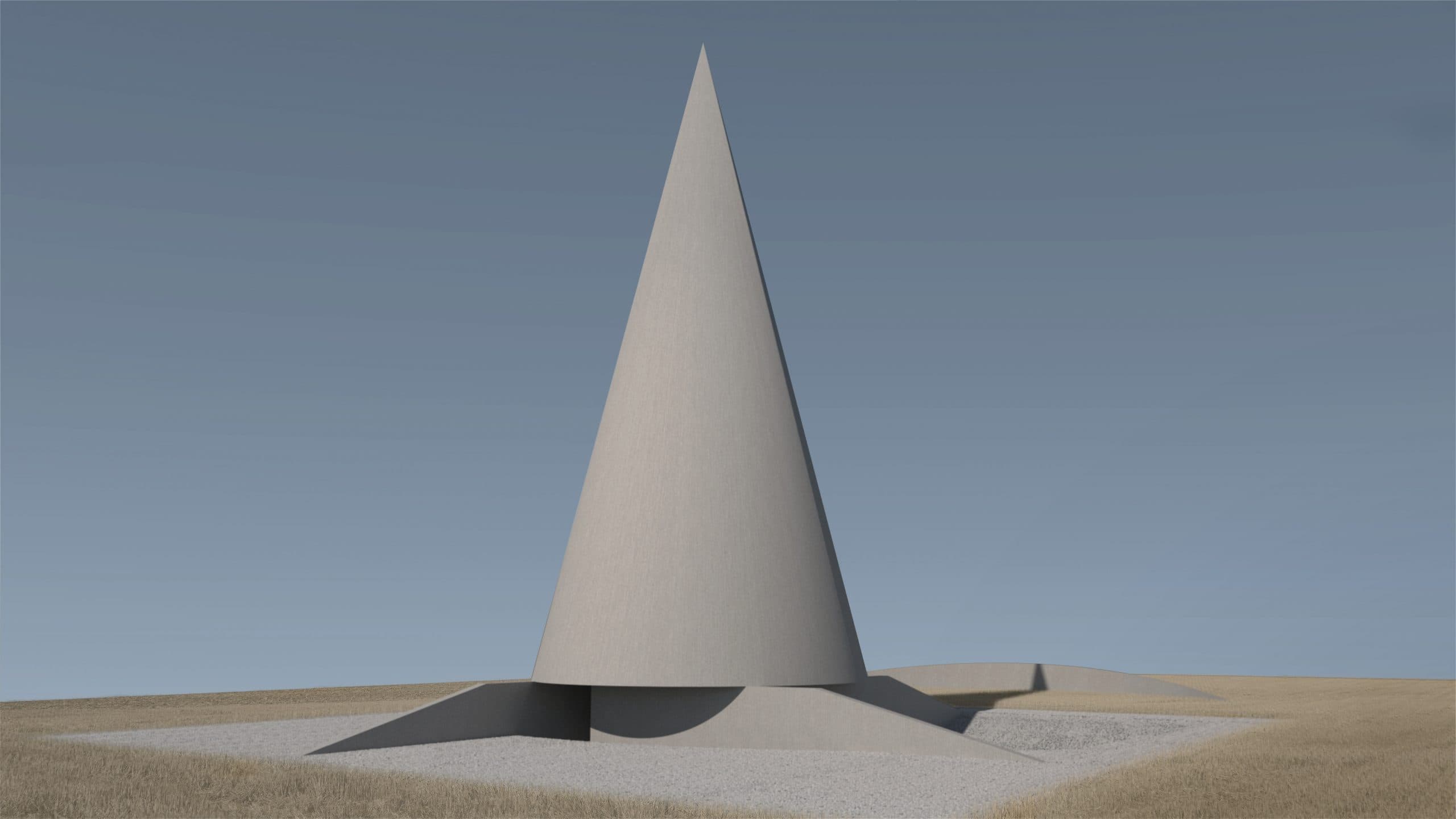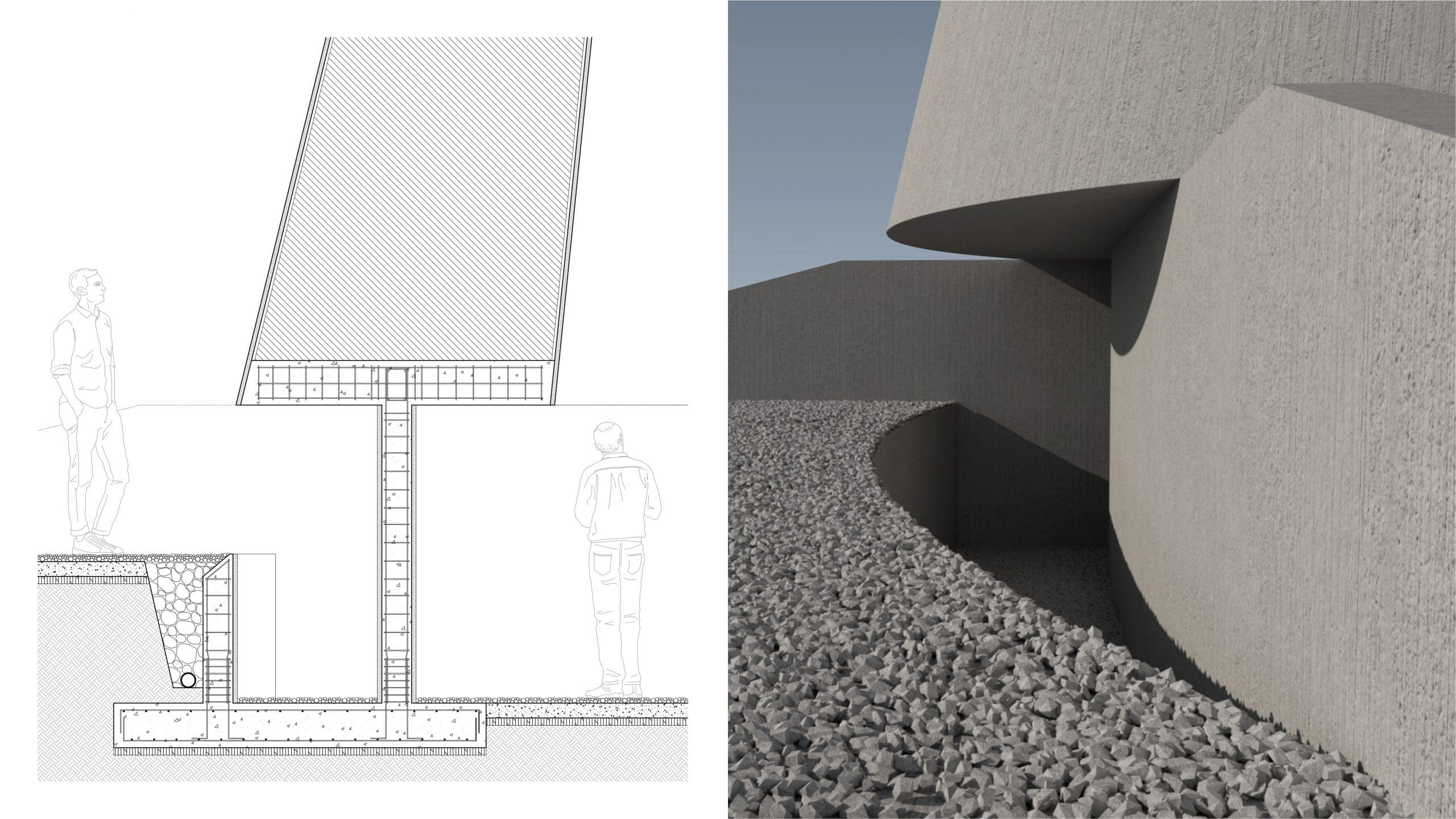TEMPLE OF HUMAN EGO
Ahankar is derived from the words ‘aham’ (ego) and ‘akar’ (form). Ego is a state of subjective illusion. Placed on a flat dry landscape amidst nowhere, temple of human ego is a space to reevaluate our life.
As we walk towards it, first thing we encounter is the apex of the cone/ the extent of human ego. This 14 m. tall cone resting on four slender planes creates an illusion of being unstable. As we enter the space, we (subconsciously) feel the burden of the cone as it is placed 2 m. above the ground level. The base of the cone is just above the human head. So even in partial darkness, we discover a square void inside it. Because of the restricted natural light, the depth of the void merges into the darkness. Standing below this void, which is also the central node of the temple, we sense the fear of unknowing darkness/ fear and burden of human ego. Being around the temple, we see the cone at our eye level. This proportion metaphorically puts forth the statement of facing our ego eye to eye.
The stone aggregate laid around creates an unsettling texture to walk on. They denote the broken pieces of life because of our ego. The aggregate seems to spread around and take over the natural landscape just like grief gradually takes over our life.
Temple of human ego intends to add a drop of awareness in our ocean.
“The moment you become aware of the ego in you, it is strictly no longer the ego but just an old, conditioned mind patter. Ego implies unawareness. Awareness and ego cannot coexist.” -Eckhart Tolle
AREA:
470 Sq. M.








